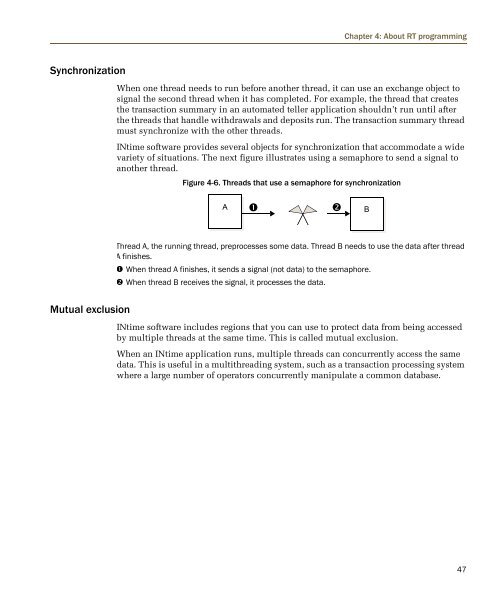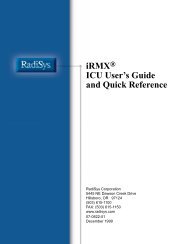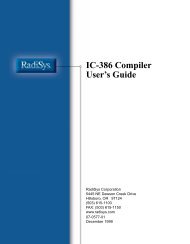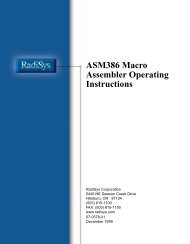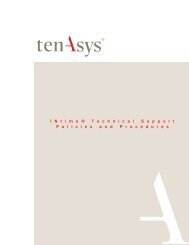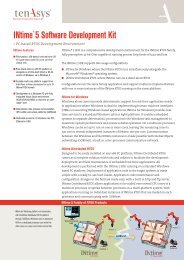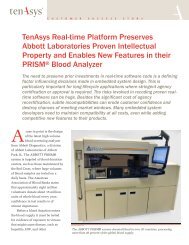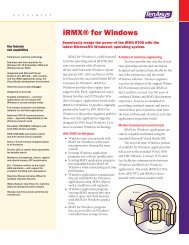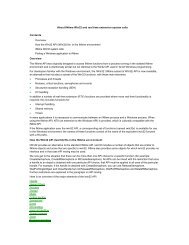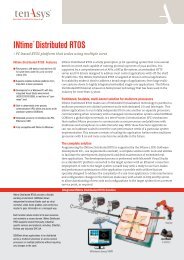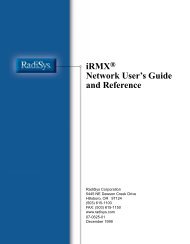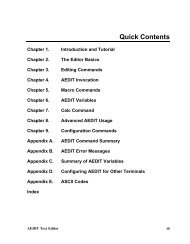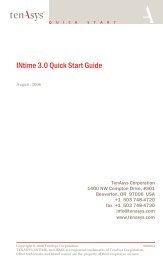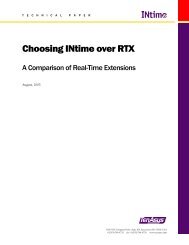INtime® 3.1 Software - tenAsys
INtime® 3.1 Software - tenAsys
INtime® 3.1 Software - tenAsys
Create successful ePaper yourself
Turn your PDF publications into a flip-book with our unique Google optimized e-Paper software.
Chapter 4: About RT programming<br />
Synchronization<br />
When one thread needs to run before another thread, it can use an exchange object to<br />
signal the second thread when it has completed. For example, the thread that creates<br />
the transaction summary in an automated teller application shouldn’t run until after<br />
the threads that handle withdrawals and deposits run. The transaction summary thread<br />
must synchronize with the other threads.<br />
INtime software provides several objects for synchronization that accommodate a wide<br />
variety of situations. The next figure illustrates using a semaphore to send a signal to<br />
another thread.<br />
Figure 4-6. Threads that use a semaphore for synchronization<br />
A<br />
<br />
<br />
B<br />
Thread A, the running thread, preprocesses some data. Thread B needs to use the data after thread<br />
A finishes.<br />
When thread A finishes, it sends a signal (not data) to the semaphore.<br />
When thread B receives the signal, it processes the data.<br />
Mutual exclusion<br />
INtime software includes regions that you can use to protect data from being accessed<br />
by multiple threads at the same time. This is called mutual exclusion.<br />
When an INtime application runs, multiple threads can concurrently access the same<br />
data. This is useful in a multithreading system, such as a transaction processing system<br />
where a large number of operators concurrently manipulate a common database.<br />
47


